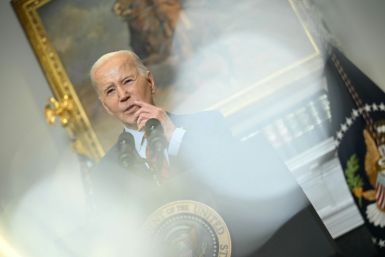Australia-India Nuclear Trade Talks Soon: What’s in store?
Australian Prime Minister Tony Abbott will meet his Indian counterpart Dr. Manmohan Singh on the sidelines of the India-ASEAN and the East Asia Summit Oct 9-10. Top on the agenda will be the need for finalisation of a nuclear deal between the two countries. The External Affairs Ministry has already said that the two countries are hoping to hold a third round of nuclear cooperation talks in Dec 2013.
"We already have held two rounds of negotiations, and we are hoping to hold a third round of negotiations if possible in December this year. We have not yet firmed up the dates. But I believe there is a strong desire on both sides to try and bring these negotiations to a successful conclusion at an early state," said Ashok K Kantha, Secretary (East) in India's External Affairs Ministry.
Although concerns have been raised in Australia about India's nuclear programme, both countries have shared a rather cordial relationship.
Australia has the world's largest uranium reserves and Indian is keen to import them for its nuclear power plants. Australia has been skeptical that its uranium could be diverted to military purpose, and therefore demands that there be an agreement first on the details for safeguarding.
Although uranium is no longer an issue that can spoil cordiality between the two nations, Australia's position vis-à-vis its exports to India has been a key sticking point in bilateral relations.
Australia's contention was that India is not a signatory of the Nuclear Non-proliferation Treaty (NPT), and hence its safeguards could not be trusted. However, with the US-India civil nuclear deal concluded in 2005 and the related exemption India secured from the Nuclear Suppliers Group despite its insistence on not signing the NPT, the world has suddenly awakened to the potential of peaceful nuclear energy in India. Definitely, Australia will not want to miss out on the party.
As one of the most rapidly expanding economies, India has a growing need for electricity. The country, however, ranks sixth in terms of production of nuclear energy, behind the U.S., France, Japan, Russia, and South Korea. Despite its vast potential, on the scale of power generation, nuclear power is a miserable fourth, after thermal, hydroelectric and renewable sources.
Over the past decade, considering its expanding demand for power, India has been envisaging means to increase the contribution of nuclear power in the country. The effort it is ramp-up capacity from the current 3.2 per cent to 9 per cent within 25 years. It means, India, is targeting almost 20,000 MW of installed nuclear power generation by the year 2020.
Following the 2005 US-India Nuclear deal, India has signed agreements with several other countries including France, Mongolia, Namibia, Argentina, Canada, Kazakhstan and South Korea. This apart, India already has a long-standing nuclear agreement with its old-ally Russia. Australia, meanwhile, in 2011, overturned its 30-year ban on selling uranium to India.
While Australia has over 40 % of the world's extractable uranium reserves, the country exports are substantially low at 19 per cent share of the world market.
According to the Uranium Association of Australia (AUA) if the uranium industry is allowed to reach its full potential, exports would see an increase from 10,000 tonnes to 28, 500 tonnes a year. This would mean $14.2 billion to $17.4 billion net value generation for the country's GDP.
With the new Abbott government less likely to be championing the cause of global nuclear disarmament than the previous government, it needs to be seen how quickly the Australia-India nuclear agreement will be sealed.
Notably, both countries have been making the right noises. Important, however, will be to see if the new government in Australia is ready to make any particular dispensation for India, or will the agreement be consistent with similar agreement which Australia has with Russia and China.






